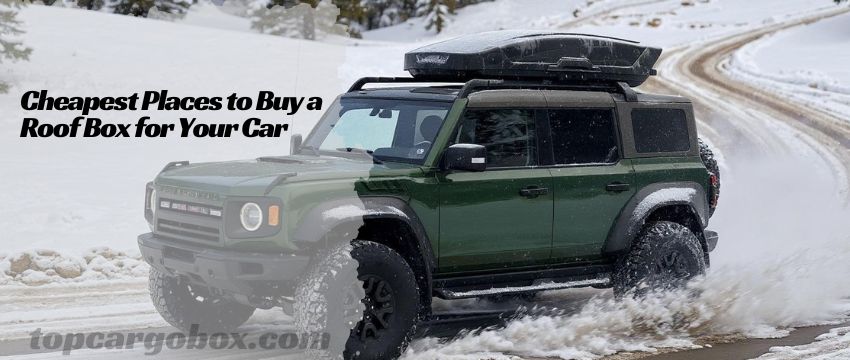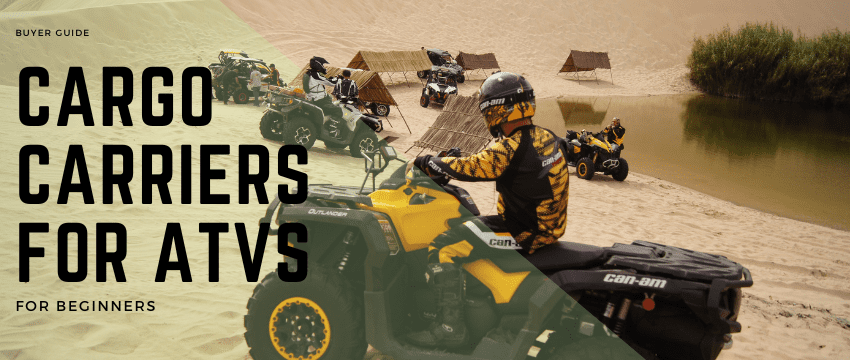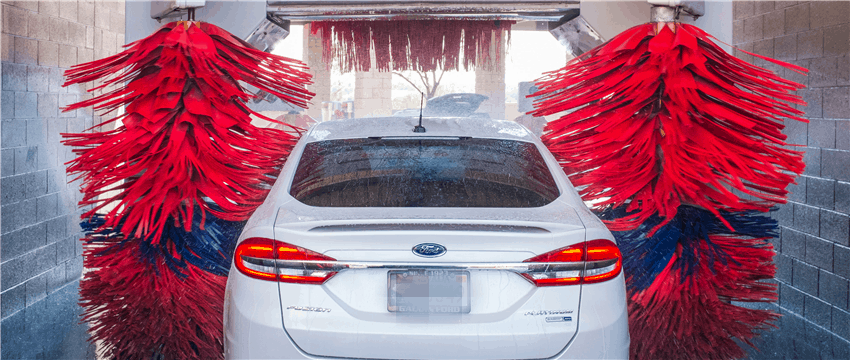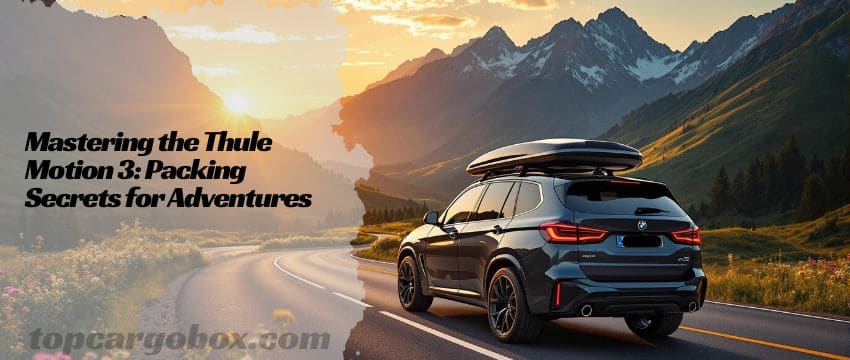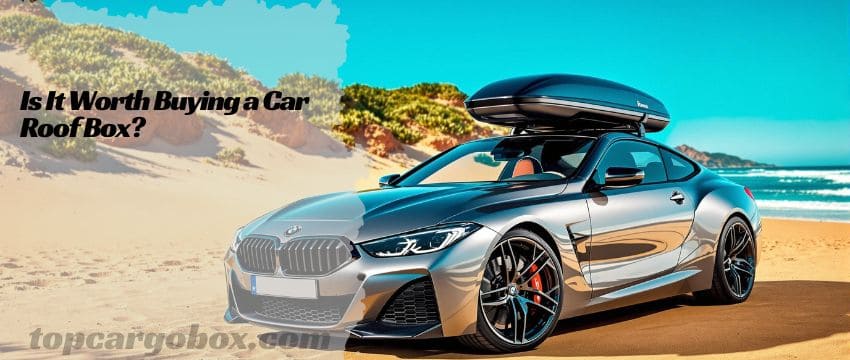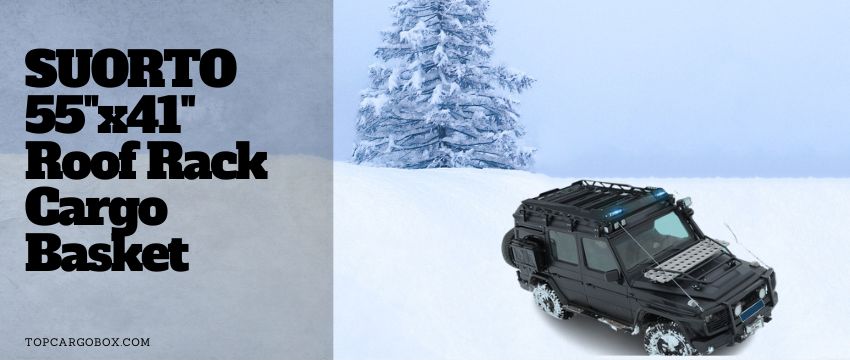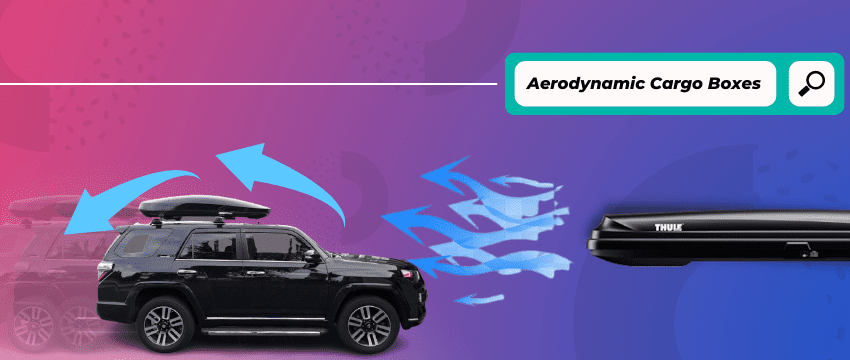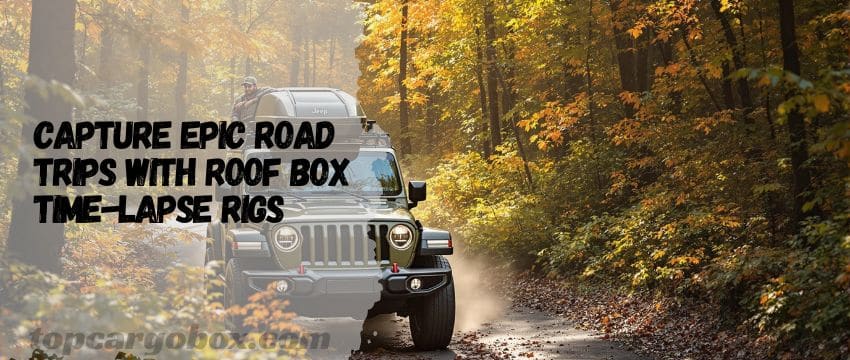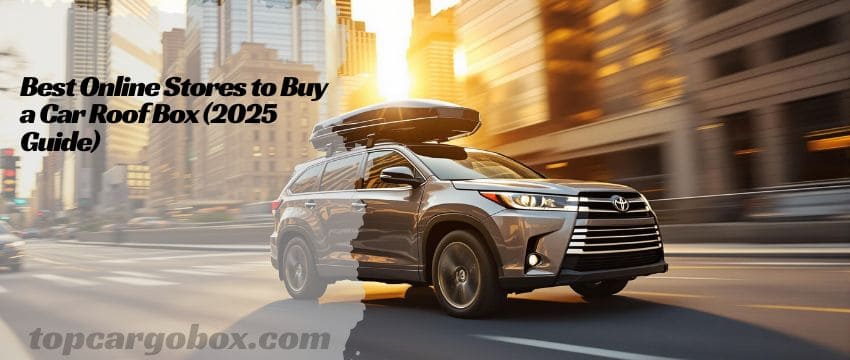Buy a cargo roof box? Feeling that familiar squeeze trying to fit everything into your car for the next big getaway? Tents wedged between coolers, backpacks jammed under feet, and the dog looking seriously unimpressed with their cramped quarters? Yeah, we’ve all been there. It totally sucks. You know a roof box is the legit solution, unlocking tons of extra space and keeping your cabin chill. But let’s be real, the price tags on some of those sleek carriers can make your wallet cry. “How can I possibly afford one?” you’re probably thinking. Chill, my friend! Finding a roof box without selling a kidney is absolutely doable. This guide is your ultimate map to uncovering the cheapest places to buy a roof box, packed with insider tips, real-world strategies, and a few places you might not have thought of. Let’s bounce and get you rolling with that extra cargo space!
Why You Absolutely Need a Roof Box (And Why Cost Matters)
Okay, let’s kick things off by solidifying why this purchase is worth your time, even when budget is tight. Imagine this: You’re heading out for a week-long camping trip with the family. You’ve got sleeping bags, a bulky tent, camp chairs, a massive cooler, food for days, plus everyone’s personal gear. Trying to Tetris that into your SUV or sedan is a recipe for frustration and arguments before you even hit the highway. A roof box solves this instantly. It’s like adding a whole extra trunk on top of your car! You get to keep your rearview mirror clear, passengers comfortable, and fragile items protected from getting crushed under a mountain of stuff. Seriously, the peace of mind is priceless.
But here’s the catch: brand-new roof boxes from big names like Thule or Yakima can easily run you $500, $800, even $1,200 or more. Ouch, right? For many of us, that’s a major chunk of change, especially when you might also need roof rails or crossbars (more on that later!). That initial sticker shock is why hunting down the cheapest legitimate option becomes so crucial. You want that extra space, but you also don’t want it to derail your entire travel budget. Totally understandable. Finding a good deal means you get the functionality you desperately need without the financial hangover. Fair enough?
Your Secret Weapon: Online Marketplaces (Amazon & eBay)
Hey deal hunters, ready to uncover where the real steals hide online? Your first stops absolutely need to be Amazon and eBay – seriously, they’re packed with potential for scoring an affordable roof box if you know the ropes. Amazon’s your go-to spot for brand-new carriers, and man, that Prime shipping getting it to your garage in like two days is pretty sweet when you’re itching to hit the road. But here’s the thing: you gotta play the waiting game and stalk those prices. They jump around constantly – it’s wild! That Thule Force L you’re dreaming about? Could be sitting at $699 today, then suddenly plunge to $549 tomorrow. No joke! Setting up a free price tracker alert (just Google it!) or making it a habit to check back every few days? Totally worth the minor effort for the cash you’ll save. It’s like catching a sale without even leaving your couch.

Now, flip over to eBay – this place is legit the treasure chest for pre-loved and open-box gems. We’re talking serious discounts that feel almost too good. Picture this: someone grabs a box for their big summer trip, uses it once, realizes it’s just gathering dust in the garage, and slaps a “half-off” tag on it. Or maybe a shop has a perfectly fine customer return they can’t sell as new anymore. Snagging a Yakima SkyBox that’s barely seen the open road for 40%, even 60%, off the sticker price? Happens way more often than you’d think. The catch? You’ve gotta channel your inner detective. Zoom in on every single photo they posted. Grill the seller with specifics: “Any deep scratches on the lid?” “Dents near the mounting points?” “Do the locks turn smoothly?” “Got ALL the original keys?”. And absolutely, positively check their seller feedback history – don’t skip this! Yeah, sometimes a deal seems suspicious – trust that gut feeling. But genuine bargains are out there, just waiting for savvy shoppers like you to find them. For real!
Don’t Sleep on Brand Outlets and Direct Sales
Hold up! Before you click “buy” elsewhere, have you checked directly at the source? Going straight to the manufacturer’s own website or their official outlet stores can sometimes unearth surprisingly good deals. Brands like Thule, Yakima, and INNO often have dedicated “Outlet” or “Sale” sections lurking on their sites. What’s in there? You might find last year’s color (who cares if it’s bright orange instead of grey? It holds gear just the same!), slightly cosmetically blemished units (a tiny scratch you’ll never notice once it’s up on the car), or refurbished models that have been professionally checked and repaired. The discounts here can be significant – we’re talking 20% to 50% off regular retail.
Think about it: A brand isn’t going to sell junk under its own name. Their refurbished or outlet items usually come with a solid warranty, giving you way more peace of mind than a random eBay seller might. It’s a fantastic middle ground between paying full price and rolling the dice on a completely unknown used box. Plus, you often get access to the same customer support as someone who bought new. How’s that for a win-win? Definitely worth bookmarking those manufacturer sites and checking back, especially around model changeover times. For instance, if you’re eyeing a specific model like the Thule Force 3, their outlet might have a gem. Or maybe a Yakima GrandTour 3 pops up refurbished. Sweet!
The Power of Physical Stores: In-Person Bargain Hunting
Okay, I totally get it – clicking “buy now” online feels effortless, right? But hang on a sec! Don’t sleep on the crazy deals you can actually find by hitting up real stores in person. Places like REI, Cabela’s, Bass Pro Shops, your local outdoor gear spot, and yeah, even big guys like Walmart or auto parts stores (AutoZone, O’Reilly’s sometimes have budget brands) can have absolute steals hiding in plain sight. Why bother dragging yourself out? Two magic phrases: Clearance Sections and Floor Models. Seriously, these spots are goldmines if you know where to look. You might just stumble upon that perfect box without waiting days for shipping – how sweet is that?
Think about it: stores gotta clear out last season’s gear to make room for the shiny new stuff. That perfectly good roof box from last year collecting dust on a high shelf? They’re often dying to move it and might slap a massive discount tag on it to get it gone. We’re talking serious markdowns here – like 30%, 40%, or sometimes even more off the original price! Imagine walking out with a box same-day instead of tracking a delivery truck. Then there are the floor models – the ones everyone’s poked and prodded. Sure, they might have a tiny scuff or fingerprint, but underneath? They work perfectly fine. Stores slash prices on these just to reclaim precious floor space. Don’t be shy! Just ask a staff member straight up: “Hey, any chance you’ve got last year’s roof boxes on clearance, or maybe a floor model you’re looking to sell?” You could be blown away by the offer. Yeah, it’s not a guaranteed win every time, but when it hits? Huge payoff for your wallet. Nice try ignoring those brick-and-mortar spots now!
Secondhand Goldmines: Facebook Marketplace & Craigslist
Alright, let’s talk truly local bargains. For the absolute rock-bottom prices, Facebook Marketplace and Craigslist are often where the deals are hiding. We’re talking individuals selling their used roof boxes, sometimes barely used, sometimes well-loved but still functional, for a fraction of the original cost. Finding a decent roof box for $100, $200, or $250 is absolutely possible here. That’s legitimately cheap!
But… (you knew there was a “but,” right?) buying secondhand locally requires serious diligence and a bit of courage. This isn’t Amazon with easy returns. You must inspect the box thoroughly in person before handing over any cash. What are you looking for?
- Cracks or Major Dents: Especially around the lid hinges or mounting points. Small scratches? No big deal. Big structural damage? Forget it.
- Seal Condition: Run your finger along the rubber seal. Is it brittle, cracked, or missing chunks? A bad seal means leaks, and that’s a disaster waiting to happen for your gear.
- Locks & Keys: Do all the locks work smoothly? Do they have all the keys? Getting locked out of your own roof box sucks big time.
- Mounting Hardware: Is the specific mounting kit (feet, clamps) included and in good shape? Missing parts can be expensive and hard to find later.
- General Function: Open and close it multiple times. Does it latch securely? Does it feel flimsy?
Meet in a safe, public place. Trust your instincts. If something feels off about the seller or the box looks worse than the photos, walk away. There will always be another one. But when you find a good one? Dude, that’s lit! You just scored massive cargo space for peanuts. For real, people upgrade or sell cars and just want the box gone. Be that lucky buyer! You might stumble upon a SportRack cargo bag someone’s clearing out, or a solid older Yakima CBX.
Timing is Everything: When to Buy for the Best Deals
Ever heard the phrase “timing is everything”? It totally applies to scoring the cheapest roof box. Buying at the right time of year can save you way more money than just hunting for the right place. Off the top of my head, here’s the lowdown:
- End of Summer/Fall (September-November): This is arguably the prime time. The main road trip season is winding down. Retailers and online sellers are looking to clear out current stock before the new models arrive next spring. You’ll see deep discounts, often 25-50% off, as everyone tries to move inventory. Think about it – they don’t want these boxes sitting in a warehouse all winter.
- Black Friday / Cyber Monday: Obviously! This sales extravaganza hits everything, including roof boxes and roof racks. Major retailers (online and physical) roll out doorbusters and significant percentage-off deals. Set alerts, make wishlists, and be ready to click fast! The savings can be substantial if you land the deal you want.
- Winter (December-February – For Online/Off-Season Shopping): Demand is usually lowest during the heart of winter (unless you’re a ski bum, then demand is high!). This can mean lingering clearance sales or more motivated individual sellers on Marketplace. If you’re planning for next summer, buying in winter can be strategic. Just be prepared for potentially slower shipping if weather is bad.
- Avoid Spring & Early Summer (March-July): This is peak buying season. Everyone is gearing up for vacations. Demand is high, so prices are usually at their highest, and sales are less frequent and less deep. Buying now usually means paying top dollar. Unless you find an incredible used deal, try to resist the urge if budget is key.
Planning ahead and buying “off-season” requires patience, but man, does it pay off for your wallet. Think of the extra cash for your actual trip!
Crucial Factor: Compatibility & Hidden Costs (Don’t Get Caught Out!)
Whoa there! Before you get too excited about that super cheap box you found, let’s talk about a major potential budget buster: Compatibility. This is HUGE. Finding a cheap roof box is awesome, but it’s totally useless (and a waste of money) if it doesn’t fit your car or your existing roof setup. I get it, it’s tempting to jump on a bargain, but hold your horses for a sec.
First, what’s on your roof right now? Do you have factory-installed roof rails running front to back? Or just little fixed points? Or nothing at all? You absolutely must know this. Most roof boxes do not mount directly to factory rails. They need crossbars that run side-to-side. If you don’t have crossbars already, that’s an extra cost you have to factor in. Quality crossbars aren’t super cheap – think $150 to $400+ depending on your car and the bar type. Forgetting this is a classic rookie mistake that turns a “cheap” box into an unexpectedly expensive purchase. Bummer!
Listen up – this is seriously non-negotiable: you must become best friends with the manufacturer’s online fit guides before spending a dime. Seriously, don’t just eyeball it or think “eh, looks about right.” Brands like Thule, Yakima, INNO, and SportRack all have these super easy tools on their websites where you punch in your car’s exact make, model, and year. Boom, it spits out a list telling you exactly which roof boxes will work and crucially, which specific mounting kits (feet, clamps, whatever) you need for your car’s setup. Ever bought something online that just didn’t fit? Total bummer, right? Assuming a box fits purely because the dimensions seem okay is a surefire way to waste your time and cash. The mounting hardware has to lock securely onto your specific crossbars or factory rails – if it doesn’t, you’re stuck trying to return it (good luck!) or selling it yourself for a loss. What a hassle you don’t need! Always, always double-check compatibility using those official tools before hitting buy. Taking these extra few minutes saves you major headaches later. For real, imagine finally getting that Thule Motion 3 or INNO Wedge 660 you found cheap, only to discover it won’t actually attach to your Subaru Outback’s rails? Grunt! Just use the tools – it’s the smartest move you’ll make. Nice try skipping this step!
Key Roof Box Features to Consider (Even on a Budget)
Okay, so you’re hunting for cheap, but you still need the thing to work well and last more than one trip, right? Even when prioritizing price, you need to consider some key features to avoid buying a total lemon. Let’s break down what actually matters:
- Size & Capacity: This is priority number one. How much stuff do you really need to haul? Measure your biggest items (coolers, suitcases). Sizes are usually given in liters (e.g., 320L, 460L) and sometimes interior dimensions (LxWxH). Don’t just buy the biggest one thinking “more is better.” A gigantic box on a small car looks ridiculous, kills your fuel economy, and might not even fit in your garage! Be realistic. A 16-18 cubic foot box (like many Yakima CBX models) is a popular sweet spot for many families.
- Opening Mechanism: How does it open? Dual-side opening (opens from either driver or passenger side) is incredibly convenient for loading in tight parking spots. Single-side opening is cheaper but less flexible. Also, check how it opens – does it lift on struts and stay up easily, or does it require you to hold it? Struts are way better.
- Security: A flimsy lock is basically an invitation. Look for boxes with integrated locking systems (usually locking the lid to the base) that work with a key. Some integrate with brand-specific locking cores (like Thule’s or Yakima’s systems). Make sure it feels robust.
- Seal Quality: A leaky roof box is worse than useless. Inspect the rubber gasket seal around the lid. It should be continuous, flexible, and free of major cracks or tears. This is critical for keeping your gear dry in rain or car washes.
- Build Quality (Even Basic): It doesn’t need to be bomb-proof if you’re just doing highway trips, but avoid boxes that feel like they’re made of flimsy, brittle plastic. Tap on it – it shouldn’t sound like a cheap toy. Look for thicker walls and reinforced mounting points.
Feature Overview: What to Look For
Feature | Why It Matters | Budget Considerations |
|---|---|---|
Size/Capacity | Determines how much you can carry; impacts car handling & fuel economy | Be realistic; bigger isn’t always better & costs more. Measure your biggest items. |
Opening Type | Dual-side offers maximum loading convenience; Single-side is cheaper. | Dual-side is worth the slight premium if possible. Check strut quality. |
Security | Protects your gear from theft. Integrated locks are essential. | Ensure locks feel solid and turn smoothly. Keys must be present! |
Seal Quality | Keeps rain, snow, and car wash water OUT of your gear. Critical! | Inspect the rubber gasket thoroughly for cracks, brittleness, or gaps. Never skip this. |
Build Material | Impacts durability, weight, and aerodynamics (affects fuel economy & noise). | ABS plastic is common & durable enough. Avoid ultra-thin, brittle-feeling plastic. |
Mounting System | Must be compatible with YOUR car’s roof/crossbars. Non-negotiable! | Factor in crossbar cost if needed. Use manufacturer fit guides! |
Aerodynamics | Affects wind noise and fuel efficiency. Sleeker designs are quieter & cheaper to run. | Even budget boxes have basic shaping. Avoid literal “bricks” if noise/MPG matters. |
Here’s your go-to guide for savvy roof box shopping, packed with key resources to dodge buyer’s remorse:
Stuck choosing between top models? Get crystal-clear comparisons like the Thule Motion 3 L vs Motion XT L showdown or see how the Yakima CBX XXL stacks up against rivals for max cargo space. Budget hunters will love side-by-side breakdowns of JEGS vs GoPlus carriers and SportRack Vista XL vs Thule Force to spot the real value kings. Dig into deep dives like the full Thule Motion 3 review or see how the Thule Force XT sizes compare across models—no guesswork needed!
Worried about real-world performance? Our hands-on tests have you covered: Check the Thule Motion 3 waterproof results and how it handles snow and rain before hitting the road. Avoid setup headaches with the top Thule Motion 3 installation mistakes guide, or scope which cars fit the Thule Motion 3 perfectly. Buying used? The Thule Motion 3 pre-owned guide reveals red flags to skip. Prefer sleek profiles? The Yakima SkyBox NX Skinny vs Thule comparison helps low-profile seekers nail their pick.
Exploring all options? We’ve benchmarked everything: The massive best cargo boxes roundup compares 14+ models, from the Yakima GrandTour 3 to Rhino Rack MasterFit. Budget gems like the GoPlus car roof box and SportRack cargo bag get full teardowns, while premium picks like the INNO Wedge 660 highlight aero efficiency. Still deciding? See how the SportRack Vista XL battles rivals or if the Thule Pulse 614 fits your ride—every scenario’s covered!
Installation: Easier Than You Think (But Get it Right!)
Feeling a bit nervous about actually getting this thing onto your car? Totally normal! But honestly, installing a roof box is usually way less complicated than it looks. Most modern boxes are designed for DIY installation. The key is following the instructions meticulously and taking your time. Rushing leads to mistakes, and mistakes can lead to a box flying off on the highway (yikes!). Set aside a good hour or so for the first time. Find a flat spot, lay out all the parts, and read the manual step-by-step.
The absolute most critical part is getting the positioning right. You want the box centered side-to-side on your crossbars. Front-to-back, it’s generally best to position it so the front edge is roughly above your front windshield for better aerodynamics and reduced wind noise. But always check your car’s manual! Some vehicles have weight limits specific to front or rear positions on the roof. Once positioned, tighten the clamps securely according to the manufacturer’s torque specs (usually given in the manual – don’t just grunt it down as hard as you can!). Give the box a firm shake when you’re done – it shouldn’t budge significantly. Finally, double-check that it’s locked! Nothing worse than driving off only to see your lid flapping in the breeze. Feeling confident? Awesome! If you’re totally unsure, many auto shops or roof rack specialists offer installation for a reasonable fee – worth it for peace of mind. Check out the specific guides for boxes like the Thule Motion 3 L vs XL to see detailed installation nuances.

Keeping Your Cheap Roof Box Awesome: Simple Maintenance
You scored a great deal – nice work! To make sure your bargain roof box lasts for seasons of adventures, a tiny bit of simple maintenance goes a long way. It’s no big deal, honestly. First up, cleaning. Road grime, bugs, tree sap – it all builds up. Give the box a wash with mild soap and water every few trips, or definitely before storing it for a long time. Avoid harsh chemicals or abrasive scrubbers that could damage the plastic. Pay attention to the seal! Wipe it down and maybe give it a light coat of silicone spray (check your manual first) once a year to keep it supple and prevent drying/cracking. This is the #1 defense against leaks.
When it’s not in use, storage matters. Don’t just chuck it in the corner of the garage where things can get piled on top. If possible, store it indoors (garage, basement, shed) in a cool, dry place, away from direct sunlight which can degrade plastic over time. Many boxes can actually be stored hanging from garage ceiling hooks or wall brackets – super space efficient! If you have to store it outside, at least cover it with a tarp to protect it from UV rays and the elements. Taking these small steps prevents the plastic from becoming brittle and keeps the mechanisms working smoothly. A little care means your cheap find stays a valuable asset for years. How wonderful is that?
Frequently Asked Questions (You Know You Have ‘Em!)
Let’s tackle some common head-scratchers right now:
Is buying a used roof box actually safe?
For real, this is the big one. Yes, buying used can be perfectly safe and a fantastic way to save money, BUT (and it’s a big but) you MUST inspect it thoroughly. Focus on structural integrity (no cracks, especially near mounts/hinges), a healthy rubber seal, fully functional locks with keys, and complete mounting hardware. Ask about its history. Buying from a reputable source (like a manufacturer refurb program) offers more security than a random stranger, but good deals exist everywhere with due diligence. Trust, but verify!
What’s the absolute cheapest roof box I can get?
Off the top of my head, the rock-bottom prices usually come from:
- Facebook Marketplace/Craigslist: Finding a basic, older, but functional used box. Prices can dip below $100, sometimes as low as $50 if you’re incredibly lucky and patient.
- Budget New Brands: Brands like SportRack or GoPlus offer new boxes at significantly lower entry points than Thule/Yakima, sometimes starting around $250-$350 new for smaller sizes. Check reviews (like the GoPlus Car Roof Box review) carefully for quality insights. You get what you pay for, but they can serve a purpose.
- Deep Clearance/Damaged Packaging: Snagging a new box from a physical store clearance aisle or online due to damaged packaging (the box itself is fine).
How much does a roof box affect my gas mileage?
Ah, the MPG hit – it’s real, but manageable. Expect a decrease of roughly 1-5 MPG, depending on the box size, shape, your car, and how fast you drive. A big, square box on a small car driven at 75 MPH will hurt more than a sleek, aerodynamic box on an SUV driven at 65 MPH. Keeping the box empty when you don’t need it helps (just remove it!). Think of the MPG loss as the cost of carrying that extra cargo – often still cheaper than renting a bigger vehicle! It is what it is.
Can I leave my roof box on all the time?
Technically, yes, you can. But honestly? It’s generally not recommended. Why? That constant MPG hit adds up over time. The box is exposed to UV rays, weather, and potential damage (low garage clearances, drive-thrus, parking garages!). It adds extra wind noise. And let’s be real, it makes your car look a bit like a permanent tourist. Taking it off when not needed for extended periods prolongs its life, saves fuel, and keeps your car looking sleek. Store it properly (see maintenance above!). Totally worth the minor effort.
What’s the catch with really cheap new roof boxes?
Okay, let’s break down that reality check about dirt-cheap new roof boxes. Ever wonder why that unbelievable price tag seems too good to be true? Seriously, off the top of my head, here’s the lowdown: those super-budget, often no-name boxes? They cut corners hard. Think plastic so super-thin and brittle it cracks way easier than you’d hope, especially bouncing down rough roads or in extreme temps. The locks? For real? They often feel flimsy right out of the box – janky mechanisms that might stick, break, or just scream “easy target” to anyone glancing at your car. And those seals promising to keep your gear dry? Nice try, but they frequently leak faster than you can say “sudden downpour,” leaving your luggage soaked. How frustrating is that after you thought you scored a deal?
Let’s be real, it’s not just about the box itself. That bargain-bin shape? It might scream like a banshee on the highway, making your peaceful drive sound like a wind tunnel, and guzzle extra gas thanks to terrible aerodynamics – so much for saving money, right? And good luck getting help if something goes sideways; customer support for these unknowns is often zero, leaving you totally on your own. Even mounting it can become a grunt, with clamps that feel sketchy or instructions that might as well be in hieroglyphics. Sure, you might get lucky and it holds up for that once-a-year camping trip if you baby it, but is that gamble worth the potential disaster? Imagine that thing cracking open on the highway or dumping your ski gear in a snowstorm because a latch failed. Sometimes, spending a bit more upfront for a known quantity – even a solid used brand name or a reputable budget line like SportRack – saves you a massive headache (and maybe your gear) down the road. Fair enough?
Wrapping It Up: Your Adventure Awaits (Without Breaking the Bank!)
Alright, let’s get real about snagging that roof box without draining your wallet. For real, finding those killer deals isn’t some secret club; it’s just knowing the smart spots to hunt and what to watch for. We totally walked through the digital giants like Amazon and eBay, spilled the tea on manufacturer secrets like their outlet stores and certified refurbished gems, scoped out the physical store goldmines for clearance racks and floor models, and didn’t forget those local bargain havens like Facebook Marketplace and Craigslist. Don’t sleep on factoring in compatibility – seriously, does your car even have crossbars ready? Those are an extra cost! And off the top of my head, always peek at the fine print for shipping or potential extra parts needed. No big deal, but prioritizing must-have features even when you’re pinching pennies is key – that watertight seal and solid lock aren’t just nice-to-haves, they’re trip-savers. How’s it going with timing? Grabbing one off-season or during a major sale event can literally save you hundreds, no joke.
Seriously, don’t let those jaw-dropping price tags on brand-spankin’-new premium boxes totally freak you out. I get it, it looks intimidating! But with a dash of patience (sign up for those price alerts!), some solid research comparing your options, and being totally open to gently-loved or deeply discounted models, that glorious extra space is absolutely within your grasp. Think about it – exploring manufacturer refurbished programs or keeping an eye out for a barely-used Thule Motion 3 or Yakima SkyBox locally can be a total game-changer. What’s up with feeling like you have to compromise? You really don’t!
Just picture your next adventure rolling out smooth: skis, tents, or all the kiddo’s gear tucked neatly overhead, everyone inside actually comfy (legroom for days!), maybe even the doggo sprawled out happily. No more frantic car Tetris trying to jam everything in, no more heartbreaking “we have to leave it behind” moments. You worked hard for this getaway, and now you know exactly how to gear up affordably. So go hunt down that perfect box, snag the deal, load it up, and hit the gas. That open road and all your favorite gear are totally waiting – catch ya on the road!
Our team is creating outdoor-gear relevant articles with passion. If our articles can help you to find the correct solutions for your questions, we will be happy about that. In the content creation process, we usually collect accurate and useful information online or offline to compile our content in an organized way. Consequently, we can guarantee that you can discover some expected answers to your questions. We appreciate your time on our site.

